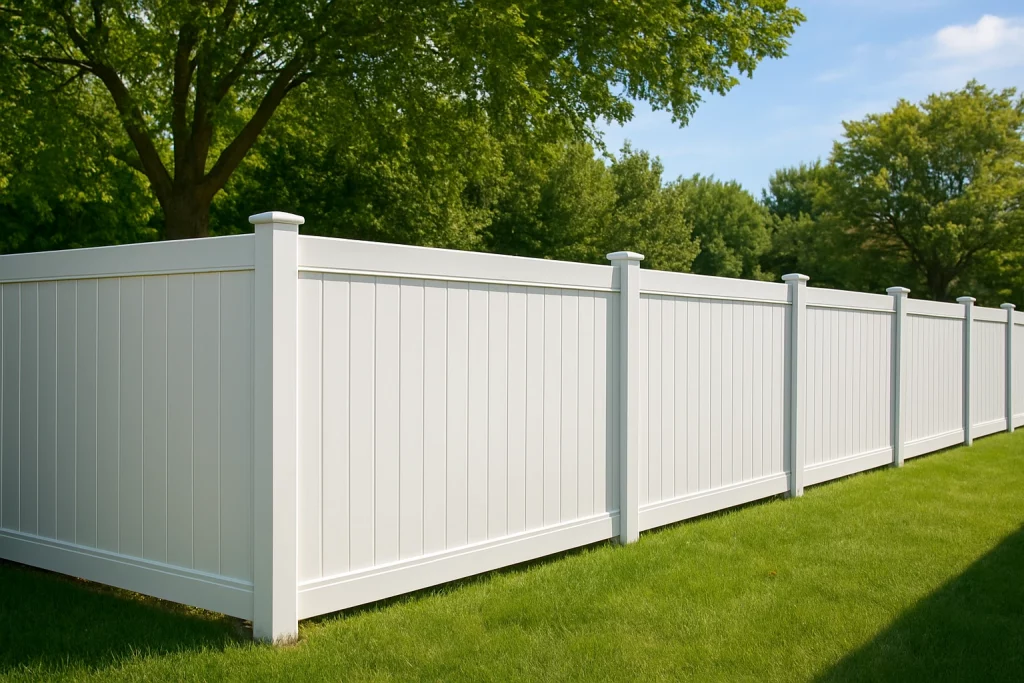Vinyl fences are a durable and low-maintenance choice for both homes and businesses. Knowing the best ways to avoid vinyl fence damage is essential for property owners who want to preserve long-term value and curb appeal. In Chicago’s variable climate—where heat, cold, and strong winds test every structure—proper installation and routine maintenance by a trusted chicago commercial fence contractor ensure your vinyl fence remains strong, attractive, and secure for years to come.
Proper Installation Is Key
A fences durability starts with how well it’s installed. Poor alignment or shallow post placement can lead to sagging or cracks during weather shifts. Professional installers understand soil conditions and apply adequate depth and spacing for each post.
For homeowners investing in vinyl fencing chicago, choosing experts ensures stability and a flawless finish that endures Chicago’s challenging seasons.
Routine Cleaning Prevents Stains and Wear
Dirt, mildew, and pollen can dull vinyl’s finish over time. Cleaning your fence regularly keeps it looking new and prevents buildup that can damage its surface.
Tips:
Use mild soap and a soft brush.
Rinse thoroughly with a garden hose.
Avoid power washers or harsh chemicals.
Regular maintenance protects color and prevents long-term fading.
Avoid Impact Damage
Vinyl fences are resilient, but not indestructible. Lawn mowers, sports equipment, and fallen branches can cause cracks or dislodged panels.
Keep a clear zone around your fence—trim vegetation and avoid leaning heavy objects on it.
Prevent Moisture Retention
Vinyl doesn’t rot, but trapped water can lead to discoloration or mildew. Maintain a proper slope around the base to allow drainage, and clear debris that traps moisture.
Protect Against Heat Exposure
Chicago’s hot summers can cause slight softening in vinyl panels. Avoid placing grills, fire pits, or heat sources too close to the fence.
Using light-colored panels can also reduce heat absorption and fading.
In mixed-material properties, pairing with aluminum fencing chicago offers a durable alternative for high-heat areas without losing aesthetic appeal.
Seasonal Inspections
At least twice a year—ideally in spring and fall—inspect your fence for early signs of wear:
Cracks or bends
Loose rails
Fading or stains
Early detection allows for simple fixes before problems escalate.
Avoid Harsh Cleaners
Some household chemicals can strip vinyl’s UV protection or cause surface deterioration. Stick to cleaning products labeled safe for vinyl or outdoor use.
Maintain Structural Integrity
High winds and temperature changes can stress panels over time. Reinforce corner posts and gate hinges annually, ensuring all hardware is rust-free and properly aligned.
Reference: Industry Standards
Following professional standards ensures long-term performance. The ASTM F964 standard defines the quality requirements for vinyl fencing, including impact resistance, UV protection, and color retention. Adhering to these specifications guarantees that materials meet the highest performance benchmarks in the fencing industry.
Conclusion
Caring for your vinyl fence doesn’t require complex work—just consistency. With the right cleaning routine, seasonal inspections, and preventive actions, your fence will remain sturdy, clean, and weather-resistant for many years. Regular maintenance not only extends its lifespan but also enhances the safety and beauty of your property.

